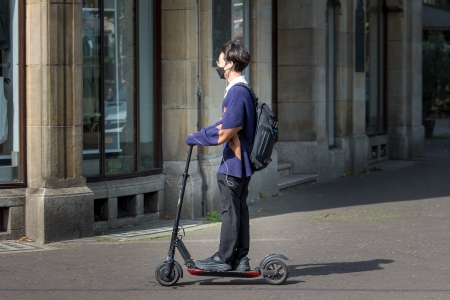Information on LEV user behaviour is mostly based on studies of e-scooter users. These studies show that owners of e-scooters behave differently from users of rented e-scooters. The latter take more risks while riding, and more often underestimate hazards. They also wear helmets less often [20] [37] [38].
In general, both observations and studies of casualties (that had to go to hospital) show that helmet use is rare: only 1% to 3% of e-scooter users wear helmets [13] [21]. A number of studies show that relatively many e-scooter users that are hospitalised are under the influence of alcohol. In a Belgian survey [39] 12% of the 99 respondents reply having been under the influence while riding an e-scooter. Austrian research shows that the average speed of e-scooters is 15.1 km/h and the maximum speed 31 m/h [38].
In most European countries, parking e-scooters poses problems [13]. Outside the EU, this is also considered a problem. In the United States, an observational study looking at 600 e-scooters, showed that 16% of them were parked incorrectly and 6% blocked the pavement [40]. In addition, parking on the pavement inevitably leads to (unauthorised) riding on the pavement in order to reach or leave the parking space [9] [11].
